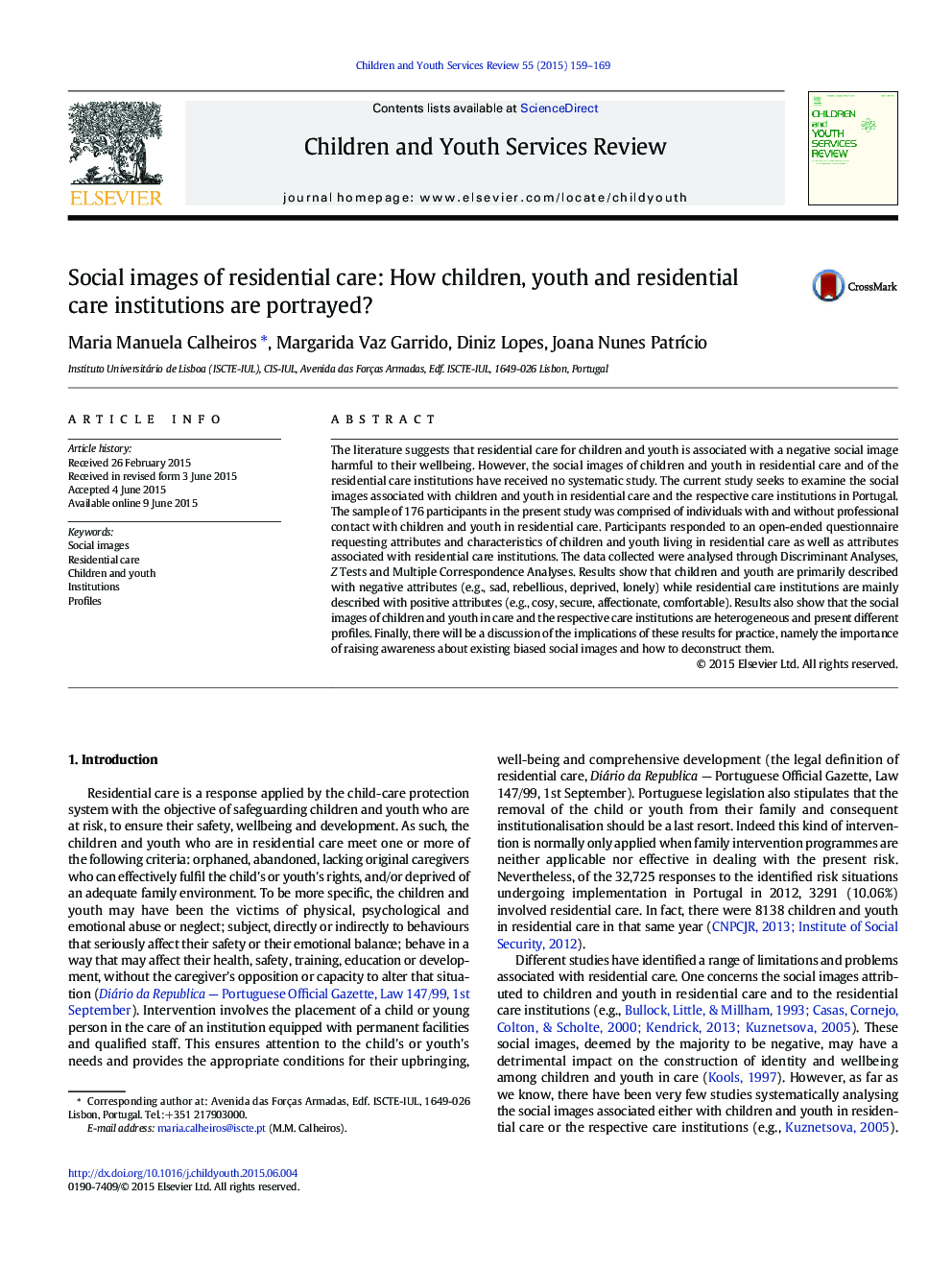| Article ID | Journal | Published Year | Pages | File Type |
|---|---|---|---|---|
| 345971 | Children and Youth Services Review | 2015 | 11 Pages |
•We examine social images of children/youth in residential care and care institutions.•These social images are heterogeneous, ambiguous and present different profiles.•Children are perceived as having internalised problems and youth as having externalised problems.•Institutions are associated with protection, safety and affection mainly for youth.•Institutions are associated with impersonal and artificial contexts mainly for children.
The literature suggests that residential care for children and youth is associated with a negative social image harmful to their wellbeing. However, the social images of children and youth in residential care and of the residential care institutions have received no systematic study. The current study seeks to examine the social images associated with children and youth in residential care and the respective care institutions in Portugal. The sample of 176 participants in the present study was comprised of individuals with and without professional contact with children and youth in residential care. Participants responded to an open-ended questionnaire requesting attributes and characteristics of children and youth living in residential care as well as attributes associated with residential care institutions. The data collected were analysed through Discriminant Analyses, Z Tests and Multiple Correspondence Analyses. Results show that children and youth are primarily described with negative attributes (e.g., sad, rebellious, deprived, lonely) while residential care institutions are mainly described with positive attributes (e.g., cosy, secure, affectionate, comfortable). Results also show that the social images of children and youth in care and the respective care institutions are heterogeneous and present different profiles. Finally, there will be a discussion of the implications of these results for practice, namely the importance of raising awareness about existing biased social images and how to deconstruct them.
